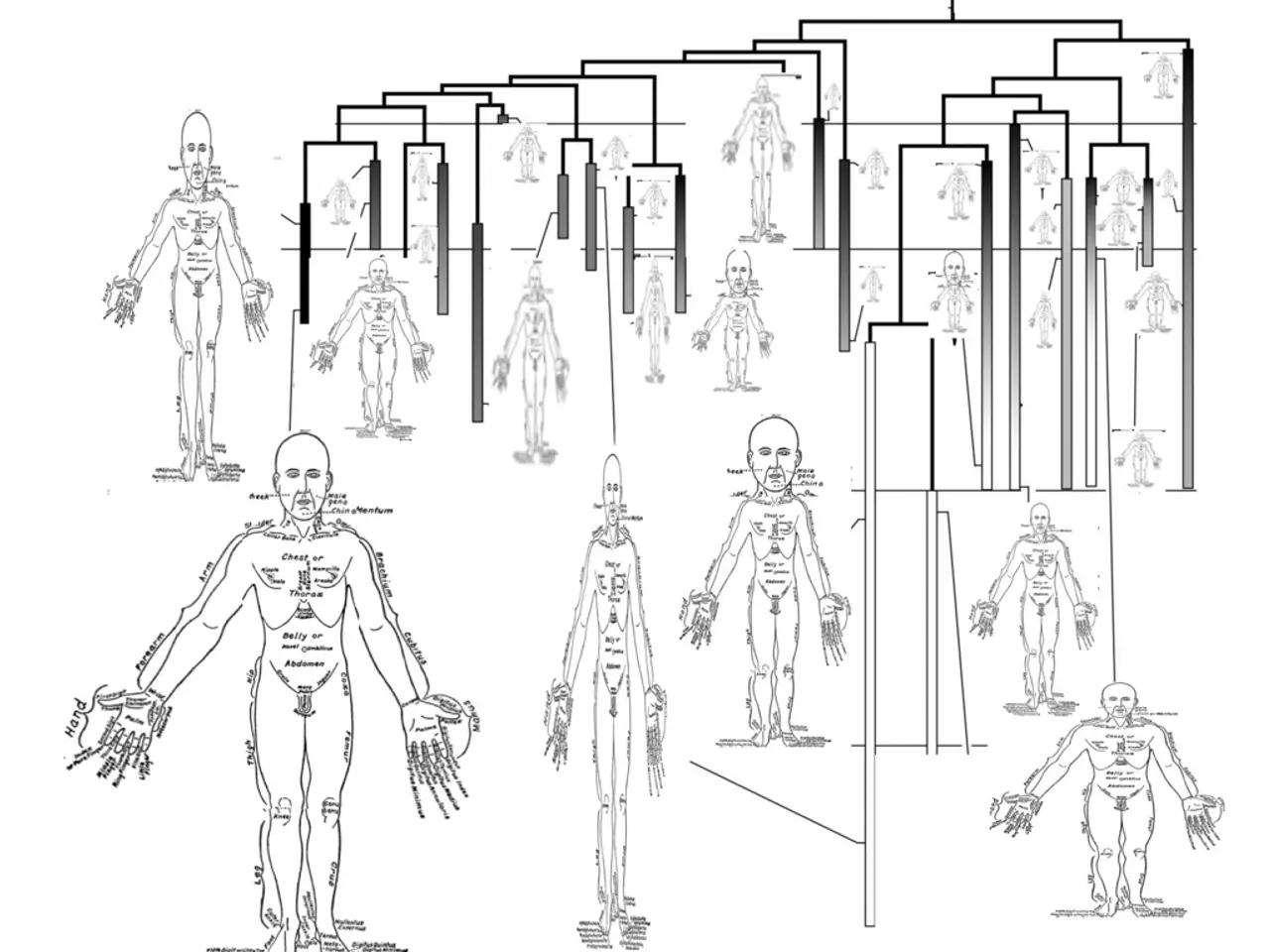Understanding the Human Center of Mass and Its Relationship to Anatomy
Central Point of Mass Dynamics: Foundation for Motion and Execution
The human body is a complex network of regions, segments, and cavities that work together in harmony. One crucial concept in understanding the human body is the center of mass (COM), a point where the entire weight of the body is assumed to be concentrated.
Anatomical Landmarks and the Center of Mass
Anatomical landmarks play a significant role in understanding the position of the body's COM. These landmarks, such as the anterior superior iliac spine (ASIS) or the medial malleolus, serve as reference points to estimate the COM's relative position, particularly in biomechanical studies. In gait analysis, for instance, anatomical landmarks like the hip or knee are used to relate to the COM trajectory and joint angles.
The Center of Mass and Body Cavities
The body's COM is generally located near the second or third lumbar vertebra (L2 or L3), within the abdominal cavity. This positioning is influenced by the distribution of body mass, which includes organs like the stomach and intestines located within the abdominal cavity. The abdominal cavity, further subdivided into the abdominal and pelvic cavities, houses the digestive system and kidneys, among other organs.
The position and weight of internal organs can affect the COM. For example, the liver, located in the upper right part of the abdominal cavity, contributes to the overall COM due to its weight.
Internal Organs and the Center of Mass
Internal organs vary in size and weight, contributing differently to the body's COM. Organs like the heart, lungs, liver, and kidneys are heavy and located in specific cavities, influencing the COM based on their position and mass. The heart, the pumping powerhouse that keeps blood flowing throughout the body, is a prime example of an organ that significantly affects the COM due to its weight and location within the thoracic cavity.
The Importance of Understanding the Center of Mass
Knowing the center of mass is essential for various fields, including body mechanics, biomechanics, exercise physiology, and sports science. The center of mass is a key factor in determining balance, stability, and efficiency of movement. In healthcare, understanding the center of mass is crucial for healthcare professionals during medical procedures or treatments. Additionally, understanding the center of mass and its influence on the human body is essential for optimizing athletic performance, injury prevention, and overall physical well-being.
In summary, the human COM is related to anatomical landmarks through reference points used in biomechanical studies, to body cavities by its proximity to organs within these cavities, and to internal organs through their mass distribution, which influences the COM's position. Anatomical landmarks serve as signposts that guide navigation of the human body, providing a consistent reference point for healthcare professionals, scientists, and artists. The center of mass represents a vital point in understanding the human body's mechanics and overall well-being.
- In the realm of science and health-and-wellness, understanding the center of mass (COM) is crucial for various fields such as body mechanics, biomechanics, exercise physiology, and sports science, as it determines balance, stability, and efficiency of movement.
- Fitness-and-exercise and sports enthusiasts can greatly benefit from comprehending the center of mass, as this knowledge is essential for optimizing athletic performance, preventing injuries, and improving overall physical well-being.




